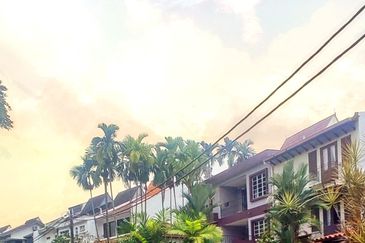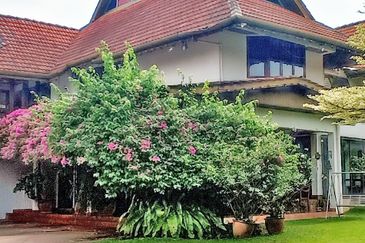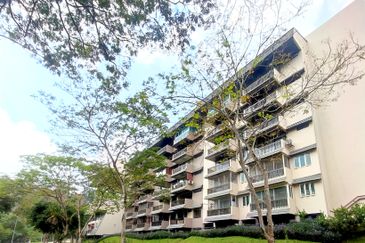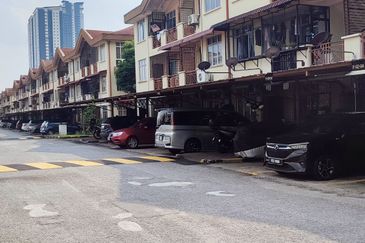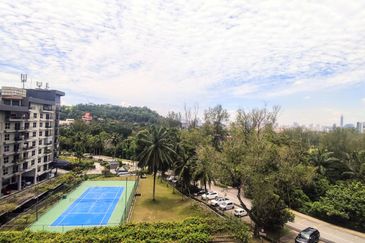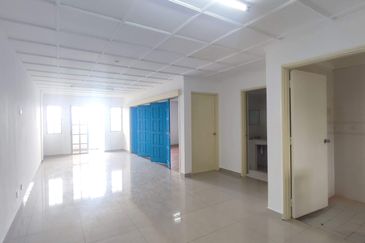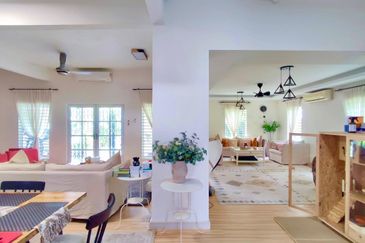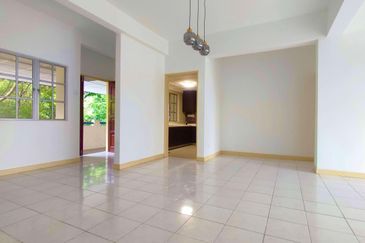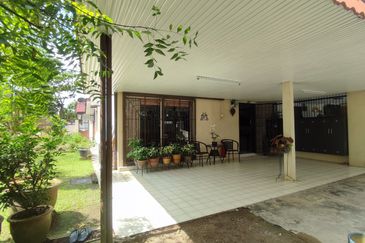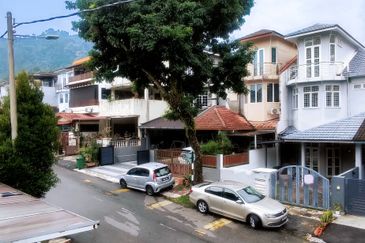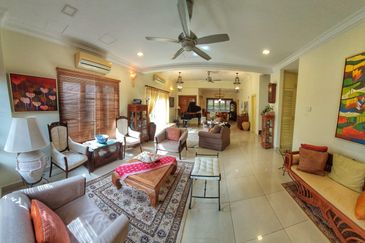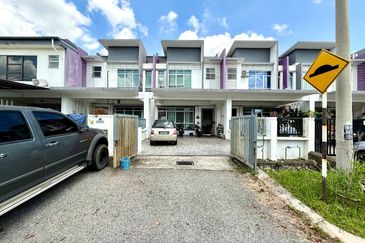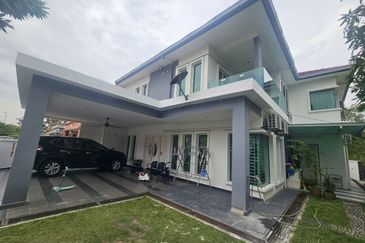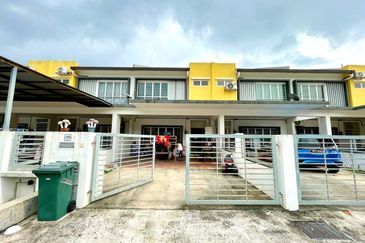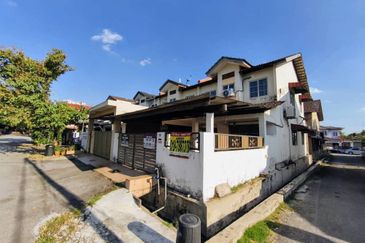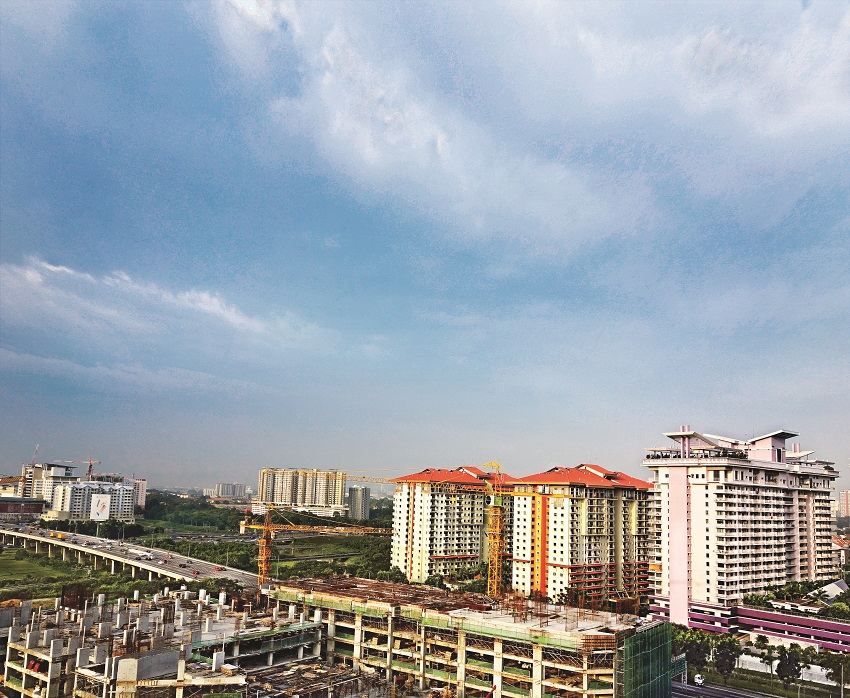
SHAH ALAM, capital of Selangor, is a tranquil, well-planned city carved out of former oil palm and rubber estates. It’s come a long way since being established in 1963, cultivating its own distinctive character. Back in the 1960s, the verdant township was poised to become the administrative centre of Selangor, and was made its capital in 1978.
Shah Alam has expanded vastly since then. Its commercial and residential areas now consist of 56 sections, divided into Shah Alam north, central and south. The older, northern parts cover 18 sections, including Kampung Melayu Subang and U1, while central Shah Alam has 25 sections (Sections 1 to 24) and is where most of its government agencies are located. In the south, there are 12 sections and newer townships, including Kota Kemuning and Bukit Rimau.
Shah Alam certainly has its quirks, with more than 18 roundabouts spread across the central portion of the city, which offers a feeling of spaciousness and serenity not often found in urban centres. This is where some of its major landmarks are located, such as the Sultan Salahuddin Abdul Aziz Shah Mosque, the Sultan of Selangor’s Palace, Perpustakaan Tun Uda (the largest library in Selangor), Muzium Sultan Alam Shah and Shah Alam Stadium. Several educational institutions, including the Management and Science University, Universiti Teknologi Mara and KDU University College are located here as well.
North and central Shah Alam also have a number of shopping centres, such as SACC Mall, Plaza Shah Alam, Kompleks PKNS, AEON Mall, Ole Ole Seksyen 18, Anggerik Mall, TESCO, TESCO Extra and Giant.

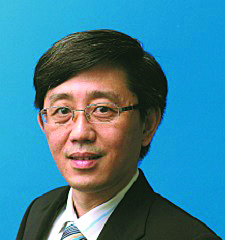
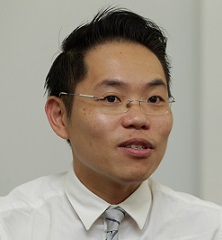

Shah Alam now encompasses many new and vibrant townships such as Setia Alam and Kota Kemuning but the focus of this article is on the older north and central parts of the city.
Analysis by theedgeproperty.com of transactions in the 12 months to 3Q2014 in north and central Shah Alam (covering Kayangan Heights and Alam Budiman to the north, and Kampung Lombong and Kampung Jalan Kebun to the south), found that average prices of non-landed homes rose just 0.7% year-on-year (y-o-y) to RM209 per square foot (psf) in 3Q2014.
There are reasons for this realistic growth trend, compared with other areas in the Klang Valley.
“While demand for both landed and non-landed properties in Shah Alam has grown steadily, properties here have not been subjected to heavy speculative forces,” says director of KGV International (M) Sdn Bhd, Anthony Chua.
“Based on the sales performances of newly launched residential development projects, condominiums and apartments seem to record strong sales. Affordability is the driving force in the current market and personal upgrading of status and lifestyle has taken a back seat,” says director of LaurelCap Sdn Bhd, Stanley Toh.
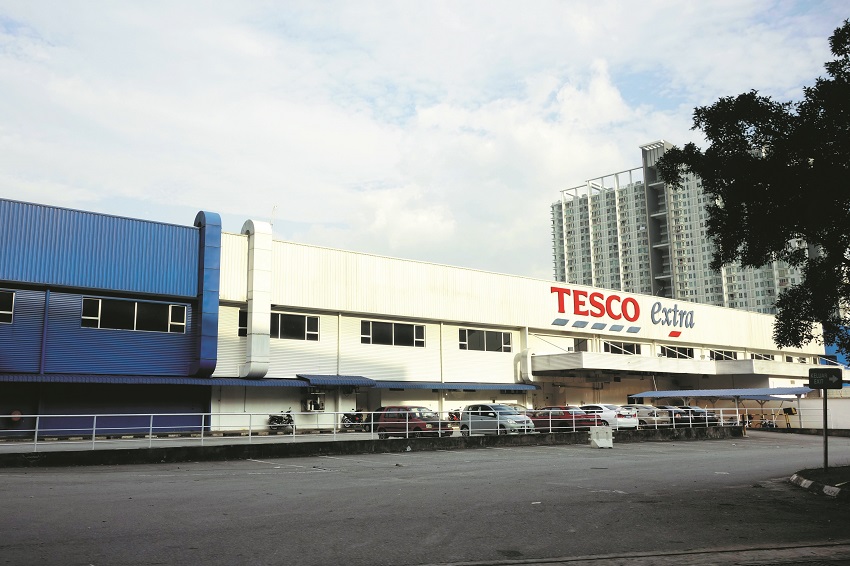
In theedgeproperty.com’s analysis of non-landed housing transactions in the 12 months to 3Q2014, the highest activity (30.7%) was in the RM100,001 to RM200,00 price range. In fact, some 98% of transactions fell below RM500,000. About 48.6% of transactions were for below RM200 psf. It was also found that Sri Acapella in Section 13 recorded the highest average price per unit during the period at RM550,000, which is about 23% higher than the next-most costly project, Seri Hijauan Condominium, in Taman Bukit Saga, which has an average price per unit of RM449,000.
The areas in Shah Alam north, such as in Kayangan Heights and Alam Budiman, cater mainly to low-medium and medium income earners, and hence attract mainly first-time homebuyers and young families, says director of Oriental Realty Sdn Bhd, Lee Jastin. “Their choice of homes ranges between RM150,000 and RM450,000,” he adds.
LaurelCap’s Toh concurs that newly married couples and young families prefer to call Shah Alam home. He adds that there are also lecturers, government servants and young graduates from the administrative offices and educational institutions in the area living in this part of Shah Alam.
According to theedgeproperty.com, the most expensive address based on transactions in the 12 months to 3Q2014 was Menara U, with an average transacted price of RM606 psf, followed by Sri Acapella (RM477 psf) and Indah Alam (RM375 psf).
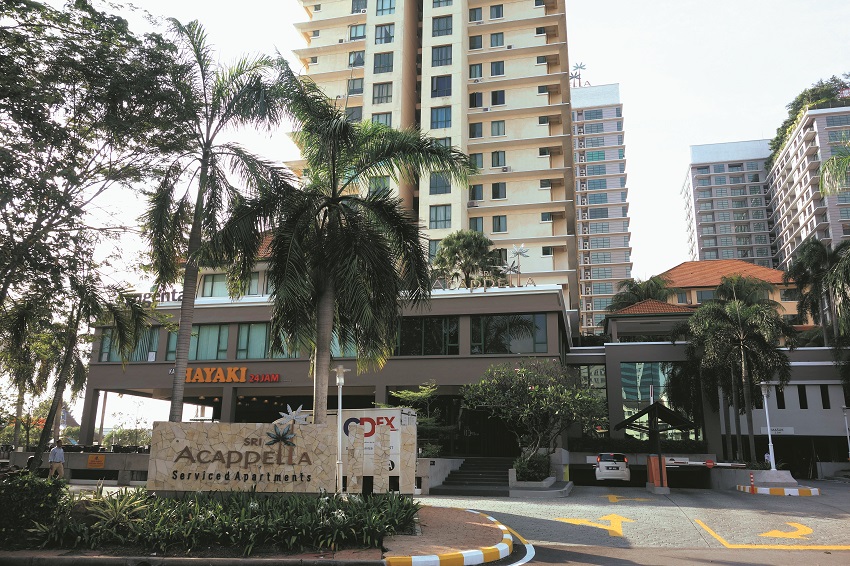
Most of the projects in Shah Alam north have shown some growth in the average price transacted.
Baiduri apartment in Section 7 experienced the highest growth, gaining 46% y-o-y to reach RM294 psf in the 12 months to September 2014. This medium-cost apartment is one of few located within walking distance of Universiti Teknologi MARA and is a popular location in the student rental market.
Based on theedgeproperty.com research as of June 2015, the asking rental yields in Shah Alam north appeared moderate, with indicative yields ranging from 4.5% to 6.1% per annum. Resort-like condominium Sri Acappella recorded the highest yield, with an indicative rental yield at 6.1% per annum.
“The current average rent ranges from RM2 to RM3.50 psf per month,” says Chua.
A great place to live?
There are perks to living here. “Shah Alam is a well-planned city, and is less dense compared with areas like Subang Jaya, Sunway and Puchong. On top of that, Shah Alam has abundant facilities and many government agencies are within easy reach. The city is also fairly green,“ notes KGV’s Chua. Residents in north and central Shah Alam also benefit from universities such as UiTM and MSU.
Any flies in the ointment? “Most of the properties here are leasehold with the exception of newer areas such as Bukit Jelutong, Denai Alam, Kota Kemuning and Kemuning Utama. It is also evident that the Shah Alam local council does not allow the establishment of cinemas, alcohol and entertainment outlets here, with the exception of i-City," says Toh. (Editor's note: There are also the little known MBO Cinema in Space U8 mall, Bukit Jelutong, and GSC Cinemas at Setia City Mall in the Setia Alam township that comes under the Shah Alam City Council.)”
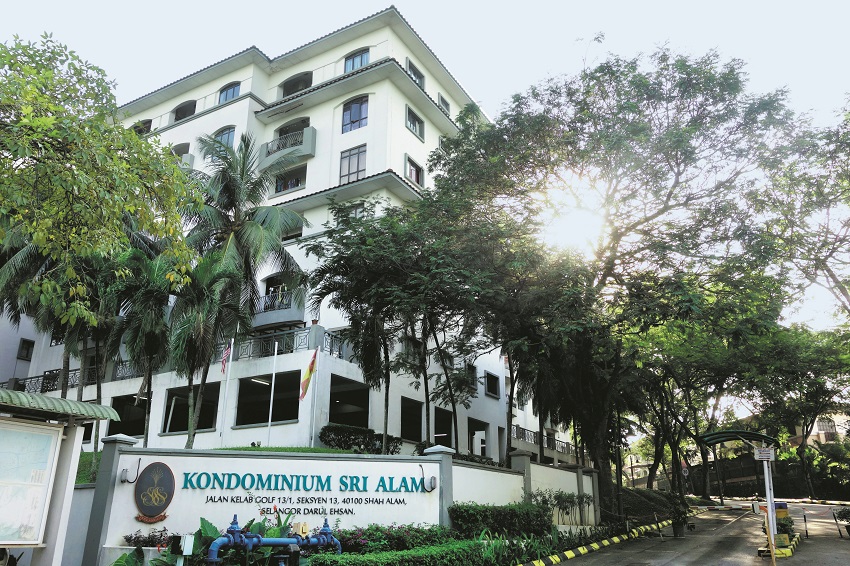
About 15 years ago, Shah Alam was granted city status, with the vision of it being a “Bandaraya Melayu” (Malay City). Thus, Shah Alam was declared a city with limited entertainment venues, including no alcohol-related premises and cinemas (apart from the two mentioned above). The lack of entertainment venues in Shah Alam has since set the tone for this city as a laid-back and sedate place to live.
Still, in an effort to add more vibrancy and attract more tourists, there is one exception to the rule: i-City, located in Section 7, Shah Alam. With an estimated gross development value of RM9 billion, the 72-acre urban development consists of corporate, residential and leisure hubs developed by I-Bhd. The project is estimated to be fully completed by 2020. The Leisure Park at i-City hosts a number of attractions, such as Snow Walk – a 50,000 sq ft ‘Arctic’ environment with 100 tons of ice sculptures. There are also the city of Digital Lights, Fun World -- which houses the country’s first wax museum -- and Waterworld. i-City draws thousands of visitors every weekend.
“One of the clear disadvantages of Shah Alam is the lack of entertainment venues. Also, the state capital lacks public transport services such as the light rail transit to connect it with other parts of Shah Alam and the Klang Valley,” says KGV’s Chua.
Due to the leasehold status of most parts of Shah Alam, and the prohibition on certain forms of entertainment venues, real estate agents say Shah Alam may face certain challenges in attracting property investors.
However, Steve Ki, head of business development of Oriental Realty (Shah Alam), believes that quiet Shah Alam may suit some “peace-loving” families.
Positive outlook
Nonetheless, Shah Alam’s overall property market outlook remains positive, with moderate growth in values.
“Developments in Shah Alam are moving towards the north-west, where Batu Arang and the Guthrie Corridor are located. Values of non-landed homes are expected to increase by 2% to 3% year on year, and values of landed, terraced homes are to increase between 4% and 5% year on year,” offers Toh.
Shah Alam’s potential will be given a boost by the new Bandar Utama-Klang LRT 3 line due in 2020. The line is expected to ease congestion along the Federal Highway. Shah Alam will have a total of seven stations: Bukit Raja, i-City, UiTM, SIRIM, Section 14, Persiaran Hishamuddin and Stadium.
“Besides, the federal government has also announced the construction of the Damansara-Shah Alam Highway (Dash), which is expected to improve the link between Damansara and north Shah Alam. This will spur developments around Denai Alam and Batu Arang,” says Chua. A proposed allocation of RM4.2 billion for the implementation of Dash was announced in Budget 2016.
“Furthermore, the development of i-City will prosper neighbouring Klang, thus creating a satellite township, much like what has happened with Petaling Jaya and Subang Jaya, where two districts have merged to become one large entity,” adds Chua.
Ki agrees. “Shah Alam was never popular among property investors, thus you would not expect property prices here to appreciate as much as other markets in Kuala Lumpur, for instance. Still, Shah Alam property is likely to produce healthy gains over the long term, and factors such as the Bandar Utama-Klang LRT3 line and Dash will contribute to this growth,” he says. Furthermore, “Shah Alam has one of the highest populations in Selangor, therefore property demand and job opportunities will constantly be available,” he adds.
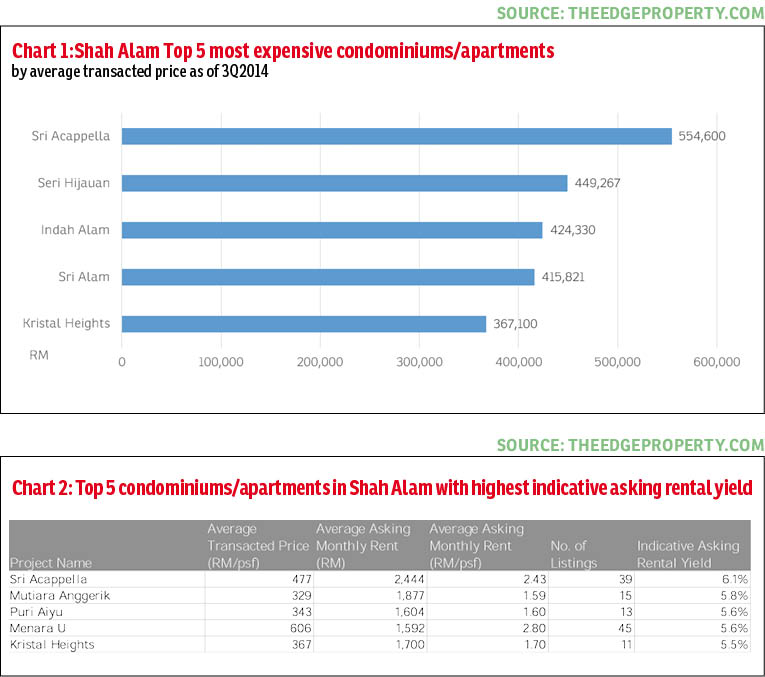
Oversupply of non-landed homes?
However, Toh suggests there may be an oversupply of high-rise properties in Shah Alam in the near future. “In general, there is an oversupply of high-rise properties in Selangor, rising 7.9% (1,889 units) from 2013. In Shah Alam, there are signs of oversupply of this property type in the RM500,000 and above price segment, especially in the town centres,” says Toh.
According to theedgeproperty.com research, some of the condominiums under construction in Shah Alam include Alam Sanjung by CB Land Sdn Bhd (a subsidiary of Crest Builder Holdings Bhd), i-Residence by I-Bhd, K3 Residensi by K3 Synergy Holdings, Metia Residence by Prop Park (a subsidiary of Hua Yang), Prins Hill Residences by NBL Development Sdn Bhd and V-Residensi 2 by B&G Superb Property Sdn Bhd. These projects are expected to contribute up to 2,300 units of new supply.
Among the recent new property developments in Shah Alam are Paramount Corporation Bhd’s Utropolis, a multi-phase, mixed-use development in Glenmarie comprising an indicative 1,422 apartment units and 120,000 sq ft of retail space called Utropolis Marketplace. With an estimated gross development value (GDV) of RM911 million, the 21.7-acre project is scheduled for completion in 2021. Its first phase features an impressive, 10-acre KDU University College campus opened in January this year.
Another upcoming development is serviced apartment i-Suite in i-City, which has a GDV of RM562 million and is expected to be completed in 2017.
Meanwhile, Toh advises investors to consider apartments and condominiums below RM500,000 that are located near universities and colleges, as they seem to fetch good yields of up to 6%. “In fact, some are able to hit close to 6.9%. Hence, investors are encouraged to look for medium-cost apartments that are close to learning institutions as a guide. The medium-cost apartments in Bandar Setia Alam also seem to fetch good returns and capital appreciation,” says Toh.
As for landed homes, there is still strong demand due to the area’s relative affordability compared with Petaling Jaya and Kuala Lumpur. Nonetheless, their prices are gradually becoming out of reach for middle-income earners.
USJ is near Shah Alam. Click here to look at some properties for sale there.
This story first appeared in The Edge Property pullout on Nov 6, 2015, which comes with The Edge Financial Daily every Friday. Download The Edge Property here for free.
This story was amended at 16:48 and 19:19 on Nov 6 to incorporate information about an MBO Cinema in Space U8 mall, Bukit Jelutong and Setia Alam Mall from @helmi_deris
TOP PICKS BY EDGEPROP
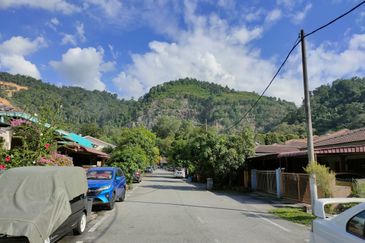
Taman Matang Jaya, Sungai Buloh
Sungai Buloh, Selangor
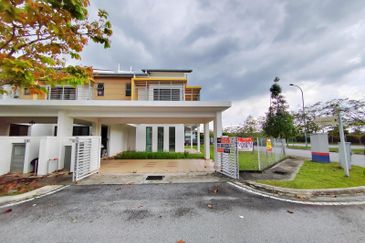
LAMAN MAWAR INDAH @ KOTA SERIEMAS
Seremban, Negeri Sembilan


